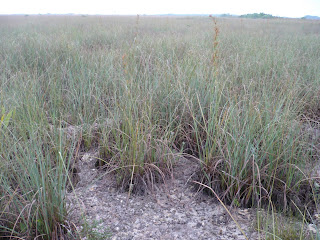We drove up to Fort Frederica National Monument on St. Simons Island in Georgia. We’re staying north of Jacksonville, FL, but it was easier to drive there from here than move house for a single day.
 They had a movie in the Visitors Center about the history of the fort. We missed the beginning of it when we first got there, so went outside for the tour first--after I played colonial dress-up!
They had a movie in the Visitors Center about the history of the fort. We missed the beginning of it when we first got there, so went outside for the tour first--after I played colonial dress-up! Fort Caroline was French; Castillo de San Marco was Spanish. Fort Frederica was a British fort and town. (It’s been a very international week!) It was built in the 1740s on St. Simons Island, GA, by General James Oglethorpe. It was the southernmost post of the British colonies, like Castillo de San Marco was the most northern post for Spain. The fort was built on the Frederica River to protect Georgia colonies. The town was planned in a grid by Oglethorpe and built by the “worthy poor” he transported from England. It had wide streets and each settler was given a big lot; the homes were built of wood, brick or “tabby”, which is sort of like concrete made of oyster shells, sand and lime. Apparently it was quite a nice little town.
 |
| Remains of Fort Frederica |
 |
| All that's left of the barracks is 3 walls on the tower |
Eventually the fort and town pretty much disappeared, with only remnants of the tower to the soldiers’ barracks remaining. In 1947 archeologists came in and started sifting through the dirt. They found foundations of several of the houses, and were able then to lay out the streets and lots in the town. The foundations are still there, filled with oyster shells to protect the site. You walk through the town, nestled under big live oak trees and Spanish moss. There are lots of descriptive signs, so with very little imagination you can visualize the way it was.
When we came back inside, our timing was still lousy—next showing was going to be in 25 minutes. We got lunch out of the truck and sat at a picnic table to eat first. We sprayed with Deet when we got there, but I still got bites.
While I go scratch, you can check out the pictures of Fort Frederica: Fort Frederica NM














































